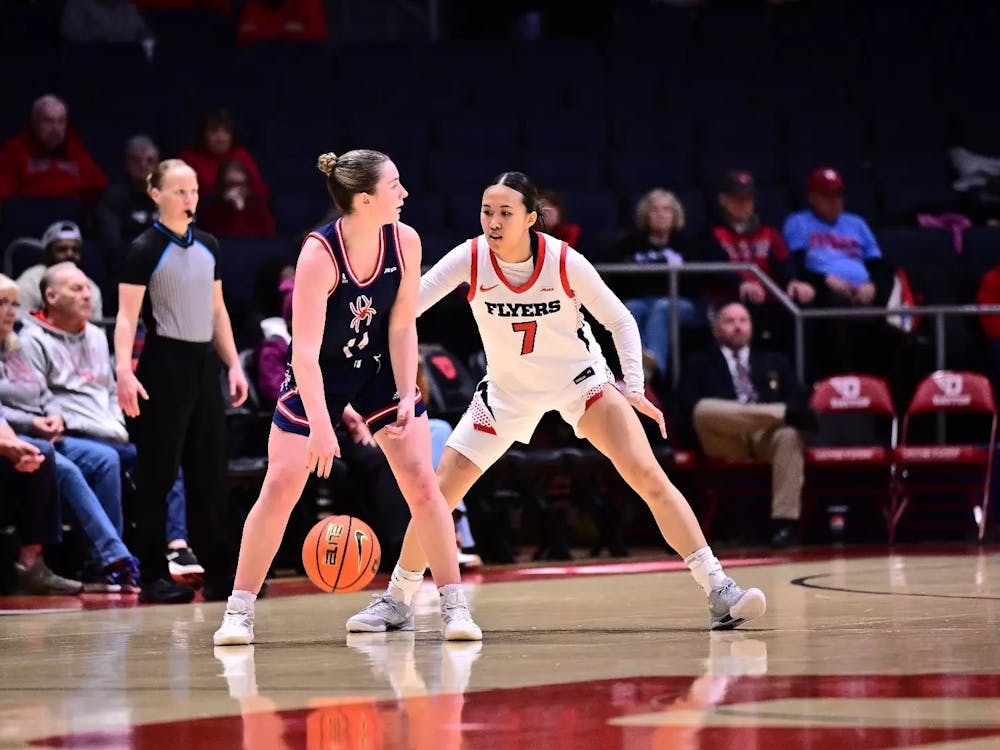Friday, Sept. 20, the Center for Civic Engagement (CCE) hosted Mark Olinger, the city of Richmond's director of planning and development, to discuss the city's plans for the future of the James River during a Brown Bag discussion.
The discussion was focused on the "Richmond Riverfront Plan," a 175-page document aimed at enhancing interaction with the James River. Richmond City Council passed the plan last November, and in May, allocated roughly $4 million towards beginning implementation.
The funding will get the ball rolling on phase one of the project, which focuses on connecting parts of the river that are currently divided, Olinger said.
"What we wanted to do is promote that the river is the center of the city, not the dividing line," Olinger said. "It's a uniter not a divider, so we wanted to do something to connect the north bank and the south bank."
Two of the first projects the city will recognize with the funding are the Brown's Island Dam Walk and Chapel Island. Bridges will be constructed at both sites to connect each side of the river. The initial planning and implementation of these projects marks the first manifestation of the specific projects within the plan.
Other projects within phase one of the plan are long-term priorities because they will require more legwork to get underway. Mayo Island is included in phase one, but won't receive initial funding because the city doesn't own it yet.
"The plan itself should be viewed as a living document," Olinger said. "The plan was our best thinking as of November 2012. Not every item in the plan will end up being adopted, and there will be items that we didn't put in the plan that at some point in the future will make sense."
City council dedicated the initial funding to Brown's Island and Chapel Island because they will connect the community with the river the quickest, Olinger said.
"We're hoping that these projects will be completed by the World Cycling Championship in 2015," he said. "We're estimating that it will take six to eight months for the designing process, so construction should begin next summer."
As the James River develops with the Riverfront Plan, city officials will have to balance construction and increased access with retaining the wildness that partially defines the river experience.
"The urban wildness of the James is one of the city's greatest attributes," said Todd Lookingbill, University of Richmond geography professor. "I think it is possible for projects to increase access and enhance connectivity while still maintaining this wildness, but it's important that environmental quality be near the top of the list of development considerations."
Andrew Valenski, a junior who attended the Brown Bag discussion, said he was concerned about some of the ecological impacts that implementation could have. The Riverfront Plan itself identifies a number of tactics to continue the restoration of the James, like noting areas where planting can stimulate the rejuvenation of several depleted plant species.
Enjoy what you're reading?
Signup for our newsletter
"They've laid out reforestation goals and said they will be removing invasive species," Valenski said. "I'm hoping that their plans are legitimate, and they will go about it like they say they will."
Justin Doyle, outreach manager for the James River Association, said he was excited to see these projects receive funding.
"We didn't want the Richmond Riverfront Plan to just be another plan that sits on a shelf collecting dust," Doyle said. "We're playing an active role in supporting the implementation of the plan by pointing out the need for implementation and the benefits it will bring to the community."
Since the projects received funding, Doyle and other community leaders have formed the "Richmond Riverfront Plan Implementation Work Group," which will seek additional funding to keep other aspects of the plan moving forward.
"We would like to focus our efforts on marketing and communications, governance and financing the plan," Doyle said. "If city council and potential corporate sponsors don't think people are interested in the plan, they're not going to fund it."
Olinger said he hoped that getting these projects underway would encourage people to support additional aspects of the plan.
"It's about getting more people to the water more of the time," he said. "Once we start making these connections, it will open up lots of opportunities for folks to use the water in ways they hadn't thought of before."
Valenski said he thought Olinger's discussion had been well-received, and was glad that the campus community had been able to learn about the Riverfront Plan.
"It's important that people know about this and get involved with it," Valenski said. "A lot of students spend time at the river, so knowing what's happening and how to get involved is very important."
Contact reporter Clay Helms at clay.helms@richmond.edu
Support independent student media
You can make a tax-deductible donation by clicking the button below, which takes you to our secure PayPal account. The page is set up to receive contributions in whatever amount you designate. We look forward to using the money we raise to further our mission of providing honest and accurate information to students, faculty, staff, alumni and others in the general public.
Donate Now


